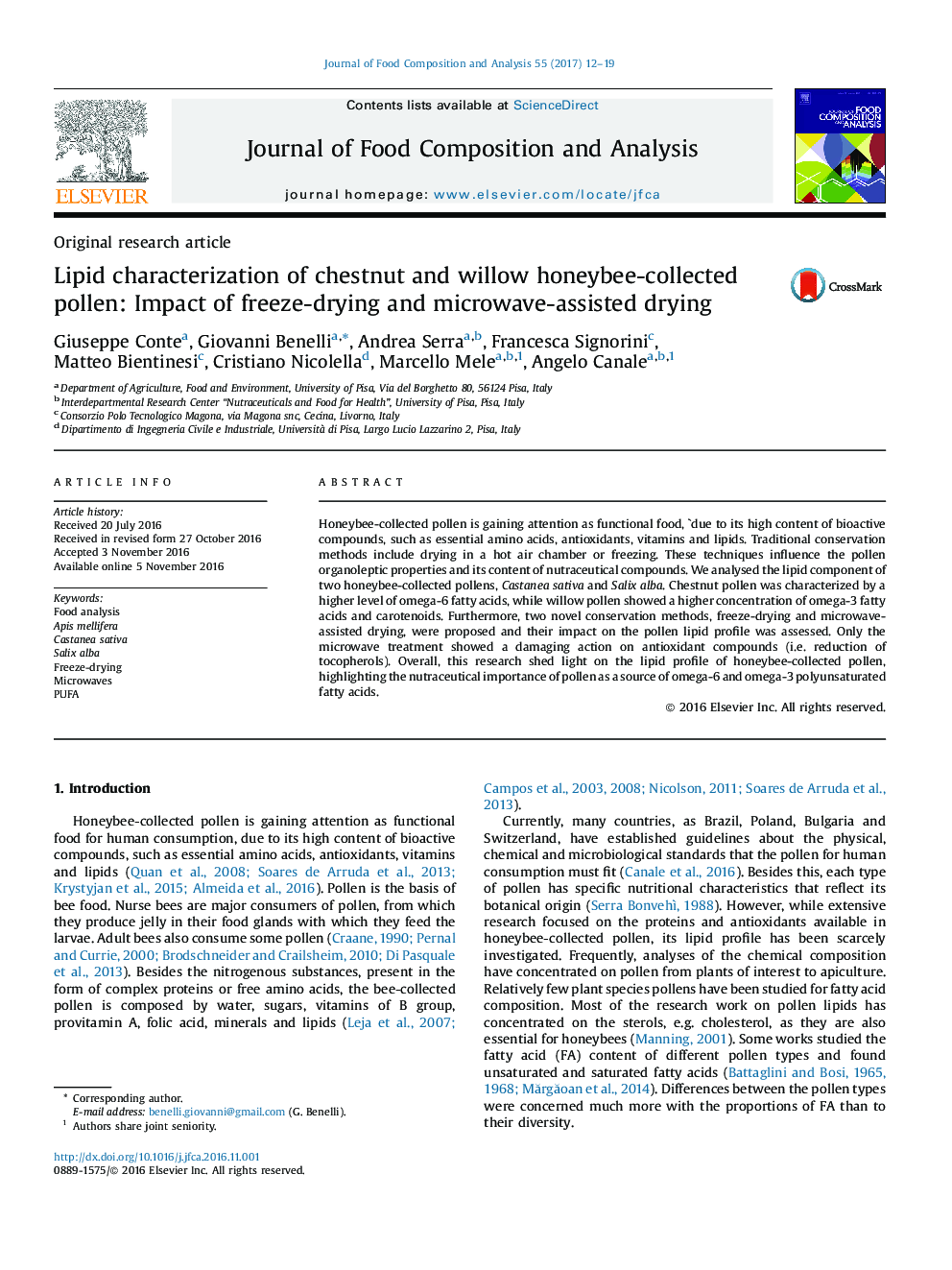| Article ID | Journal | Published Year | Pages | File Type |
|---|---|---|---|---|
| 5137037 | Journal of Food Composition and Analysis | 2017 | 8 Pages |
â¢We studied the impact of two novel conditioning.â¢Methods on bee pollen lipids.â¢High levels of Ï-6 and Ï-3 fatty acids characterized chestnut and willow pollen.â¢Freeze-drying and microwave-assisted drying offer advantages for pollen conservation.â¢However, microwave-assisted treatment led to reduction of tocopherols.
Honeybee-collected pollen is gaining attention as functional food, due to its high content of bioactive compounds, such as essential amino acids, antioxidants, vitamins and lipids. Traditional conservation methods include drying in a hot air chamber or freezing. These techniques influence the pollen organoleptic properties and its content of nutraceutical compounds. We analysed the lipid component of two honeybee-collected pollens, Castanea sativa and Salix alba. Chestnut pollen was characterized by a higher level of omega-6 fatty acids, while willow pollen showed a higher concentration of omega-3 fatty acids and carotenoids. Furthermore, two novel conservation methods, freeze-drying and microwave-assisted drying, were proposed and their impact on the pollen lipid profile was assessed. Only the microwave treatment showed a damaging action on antioxidant compounds (i.e. reduction of tocopherols). Overall, this research shed light on the lipid profile of honeybee-collected pollen, highlighting the nutraceutical importance of pollen as a source of omega-6 and omega-3 polyunsaturated fatty acids.
